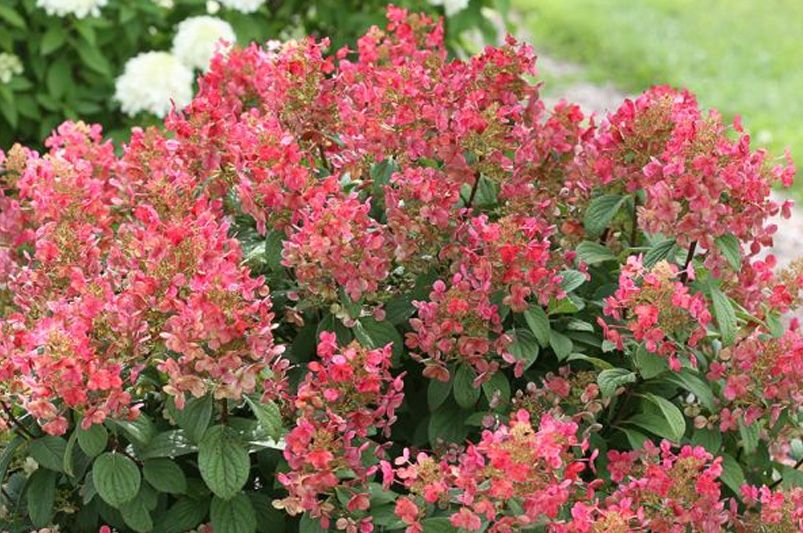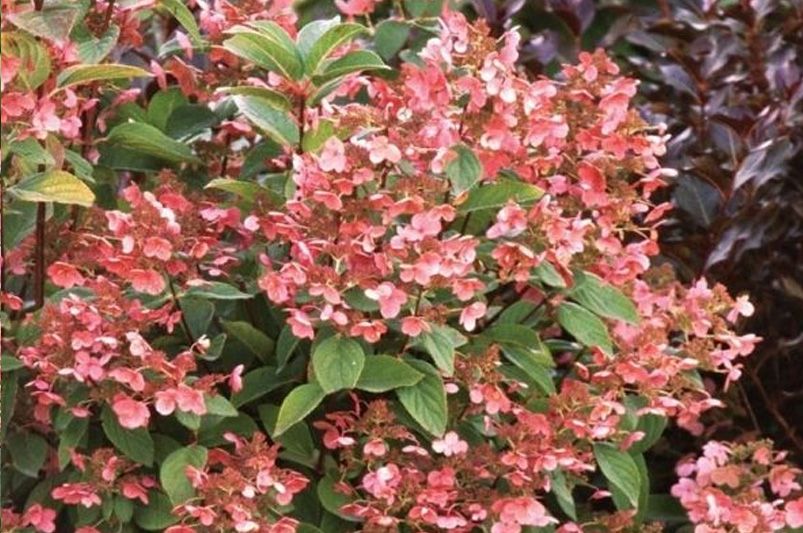
Quick Fire Hydrangea – Your Garden's New Bestie! Everything You Need to Know About Hydrangea Paniculata
Published: 01/04/2024 | Updated: 01/04/2024
The quick fire hydrangea a.k.a. quickfire panicle hydrangea is a one-of-a-kind. Blooms around a month earlier than other hydrangea variations, beginning a bloom cycle in early to mid-summer depending on the local climate, and continues throughout summer into full. While the first flowers are white they go through a gradual transformation moving from pink to a red purple or dark pink hue as the season goes on.


Appearance
The quick fire hydrangea further distinguishes itself with a deep orange too rusty coloured fall foliage. This incredibly robust plant exhibits an upright rows habit, making it suitable for planting in groups, in large arrangements as a screen, or as an individual specimen along perennial borders. The 6-inch panicles resting on upright stems, make this little quick-fire wonder a perfect choice for fresh flower bouquets or potpourri. Unlike the impressive Bigleaf hydrangea, the color of this flower remains unaffected by changes in soil pH.
Size and Growing Conditions
Quick fire, the trademark name for this plant, enjoys special protection from U.S. Plant patents, which safeguard and ensure its asexual propagation through vegetative material. Given the botanical name hydrangea paniculata, this lively shrub achieves a mature full size of 6 to 8 feet. Thriving in both full and partial sun in well-drained as well as moist soil with a neutral pH of 6.6 to 7.3, it blossoms from summer all the way through to fall, displaying a lovely color evolution that changes from white to pink.
Care
Caring for the quick fire hydrangea is pretty straightforward as it tends to thrive in various soils, it exhibits A tolerance for air pollution and blooms on new wood, making it resilient even in severe winters. The plant's panicles while potentially heavy, generally tend to bend without breaking due to their incredibly sturdy stems, thus eliminating the need for a deadheading which contributes to the shrub's low maintenance.
Light Needs
As for the light preferences of the quick fire hydrangea, it depends on their location. They thrive in full sun in northern areas and benefit from partial shade in southern regions, particularly during the early afternoon. Their soil requirements include being in moist soil rich in organic matter, with zero impact on flower color based on soil pH. Plentiful watering during the first growing season and maintenance of soil moisture for established shrubs are more than crucial. The hydrangea's hardiness extends from zones 3 to 8 in the United States.
Pruning
Panicle hydrangeas like the charming little quick fire tend to produce flowers along the current season stems. This means that there is no real risk of the buds being damaged during the wintertime. Provided you pruned them before late spring you will see flowers during the year.
You can also prune little quick-fire hydrangeas in late fall once the plant becomes dormant that is if you don't want to keep its flowers blooming during the winter. We tend to prune them in the early spring to enjoy their flowers for as long as possible. Prune the branches back by about a third of their length, this will help to create the appearance of a fuller bigger plant with larger blossoms. Having done this you're good for another growing season.
Uses
The little quick-fire hydrangea's humble sighs mean it can easily fit into most gardens. You can plant a row of them along your outdoor space, As they will not grow too large and block your view. You can also plant them as a flowering hedge or screen for a line of evergreens that show color all summer.
Watering
Having planted and passed the first growing season, you want to water the shrub once every few days unless you are blessed by plentiful rainfall. Growing shrubs will perform best in moist but not overly soggy soil. For extended dry periods or drought, should you happen to see wilting foliage, try to water it slowly and gradually, it will spring back to life.
Climate
As we mentioned before this little plant is extremely hardy. In hot weather, however, you might want to protect it against excessive heat stress by keeping the soil slightly moist. High levels of humidity combined with a lack of air circulation can potentially lead to fungal infection.
Fertilization
Provided you are planting it in soil that is enriched with organic natural matter, you only have to fertilize quick-fire hydrangea once in the spring preferably with a high phosphorus fertilizer that encourages blooming.

FAQs
Can they be used in flower arrangements?
Yes, hydrangeas make for wonderful cut flowers. The blooms are not only easy on the eye as they grow on the shrub, but they also hold up very well in bouquets. You want to cut the stems at an angle and place them in water with some preservatives for longer-lasting arrangements.
Do they attract pollinators?
Yes, the quick-fire hydrangea is very attractive to pollinators including bees and butterflies. The flowers provide a fabulous nectar source that supports local populations of pollinators.
Can they be grown as hedges?
Certainly! Quick-fire hydrangeas make for wonderful flowering hedges. Make sure to allow for proper spacing between the shrubs and consider the full size they will reach once mature when planning your hedges.
Are quick-fire hydrangeas resistant to pests?
They are typically resistant to both pests and diseases. But like any plant, they can be susceptible to other issues. Try to keep an eye out for common pests like aphids and always be on the lookout for potential sources of infection.
How can I encourage a second bloom?
While they are known for their lengthy blooming periods, you can easily encourage a second bloom by pruning and deadheading spent flowers as this will prompt the plant to redirect its energy into producing new ones.
Can they be grown in different climate zones?
Absolutely! Quick-fire hydrangeas are extremely versatile and can be grown in a variety of climate zones. They are incredibly cold Hardy and can tolerate a wide range of temperatures, particularly along the cooler scale. However as with all plants extreme conditions may affect their tendency to bloom, they do not hold up as well in hotter, drier climates so it's essential to consider the specific needs of your climate zone.
Start Building Your Hydrangea Collection Today
This hardy hydrangea whose white flowers transform into charming pink shades is a garden muse you won't want to miss. A versatile little shrub that blooms with the slightest touch of TLC is a complement to any outdoor space. Its kaleidoscope of colors makes it stand out in the crowd and it makes the perfect focal piece. Here at Shrubhub, we've compiled some top-tier hydrangeas for you to choose from, so you can begin your hydrangea journey today. If you're feeling inspired to add some hydrangea flower power to your outdoor space, our experts are here to advise on everything from companion plants to soil prep and yard design. Sign up for a consultation call today.


